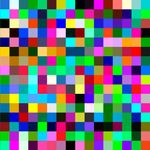 Adobe Community
Adobe Community
- Home
- Photoshop ecosystem
- Discussions
- Re: Save For Web (Legacy) actual export file size ...
- Re: Save For Web (Legacy) actual export file size ...
Save For Web (Legacy) actual export file size doesn't match size in export settings
Copy link to clipboard
Copied
I have a JPG image with file size 1.80MB. I'm trying to reduce that size via Export > Save for Web (Legacy) > lowering quality to Medium, which the dialog window says will yield file size 105KB. But the actual file size after export is 1.66MB. Screenshot included, image blocked out for privacy. The file was created on a Mac then sent to my Windows device.
This has always worked for images at 72ppi, which is the resolution I normally work with, but this image is at 300ppi. I'm assuming that's the issue, but what can I do about it and why does the higher ppi cause this issue? Lowering the ppi to 72 ruins the image.
(I'm not a graphic designer so I'm not well versed in all this, I just post images that are sent to me and sometimes need to reduce their size before doing so.)
Explore related tutorials & articles
Copy link to clipboard
Copied
The file was created on a Mac then sent to my Windows device.
By @Summer35485157hduj
Does the file size change along the way? In other words, what’s the size when it first appears on the Mac after export, and is that different than the size reported in Windows?
Copy link to clipboard
Copied
Ppi is irrelevant and has no bearing on file size. It's just a metadata instruction for print pixel density, it's not a property of the file.
Mac or Windows is also irrelevant, aside from specific settings that could differ.
I find it hard to believe that you can export a 1.8 MB jpeg at only 105 kB. That might be possible with maximum compression/lowest possible quality, but even then you'd be hard pressed.
If the original isn't an already compressed jpeg, however, but a PSD or TIFF, then those numbers are normal.
Note that resaving a jpeg tends to increase file size at the same quality setting. This is because the compression artifacts are effectively added detail, which compresses much less effectively. I tried to resave a 1.85 MB jpeg at the same settings, which resulted in a 2.2 MB new jpeg.
Copy link to clipboard
Copied
It has worked in the past. I don't actually reduce that drastically at work, this was just a demonstration, but the point is that I could for every other image I've ever been given to work with.
Copy link to clipboard
Copied
To further clarify- I'm not staying at the same quality setting when I export. I'm deliberately lowering it to get the smaller size that our system can work with. If you check the screenshot I included in the post, you'll see the quality change in the export dialog.
Copy link to clipboard
Copied
IDEALLY - I would not be resizing a JPEG but a TIFF then after resizing save as JPEG
Why?
A few notes on Jpeg:
Jpeg files have compression applied, changing resolution or cropping and re-saving enhances the compression artifacts - this means that Jpeg is only really suitable for final file delivery/transfer - with the Jpeg created only once size and resolution (and any sharpening) have been completed.
So, Jpeg is far from ideal for editing and not OK for archiving or for any file that may need to be resaved, resized or cropped down the line.
Jpeg is the worst possible format if you want to keep high quality - you should always archive a copy of your original, ideally with any adjustment layers intact - if you work with layers.
Jpeg compression (at any setting*) really is "lossy”, irreversible, and cumulative, so Jpegs should ONLY be used only for final delivery and only created from the original file format AFTER resizing & cropping to the FINAL size and crop.
To explain: any edits to size or crop, or even just re-saving a Jpeg file means further compression, potentially that’s very damaging.
The JPEG compression damage is not always immediately apparent, which is perhaps why it's still widely used - however, that compression will soon cause issues if you do further work and save again. That’s when you’ll see a Jpeg with some real issues.
*don’t imagine that selecting maximum quality for your Jpeg is preserving the original data, it’s still compressing a lot which discards information.
SO, don’t reuse Jpegs if any resizing or resaving is needed. Always go back to the PSD/ Tiff originals, Jpegs are essentially a 'use once and trash' file type.
I hope this helps
I hope this helps
neil barstow, colourmanagement net - adobe forum volunteer - co-author: 'getting colour right'
google me "neil barstow colourmanagement" for lots of free articles on colour management
Help others by clicking "Correct Answer" if the question is answered.
Found the answer elsewhere? Share it here. "Upvote" is for useful posts.
Copy link to clipboard
Copied
Use File > Export > Export As > JPG.
Adjust the quality slider to desired filesize in KB. See screenshot.
Scroll down and check the box for Convert to sRGB color space.
Alt-Web Design & Publishing ~ Web : Print : Graphics : Media
Copy link to clipboard
Copied
Scroll down and check the box for Convert to sRGB color space.
By @Nancy OShea
...and check "embed color profile". Without an embedded profile, the colors can/will change unpredictably.
Copy link to clipboard
Copied
Just a note on Nancy's screenshot, which is using Legacy Export As for the % based slider, the new UXP based engine only offers 7 quality steps, with 7 the equivalent of 100% (this isn't available in Mac's with the M-series "Silicon" chipset).


